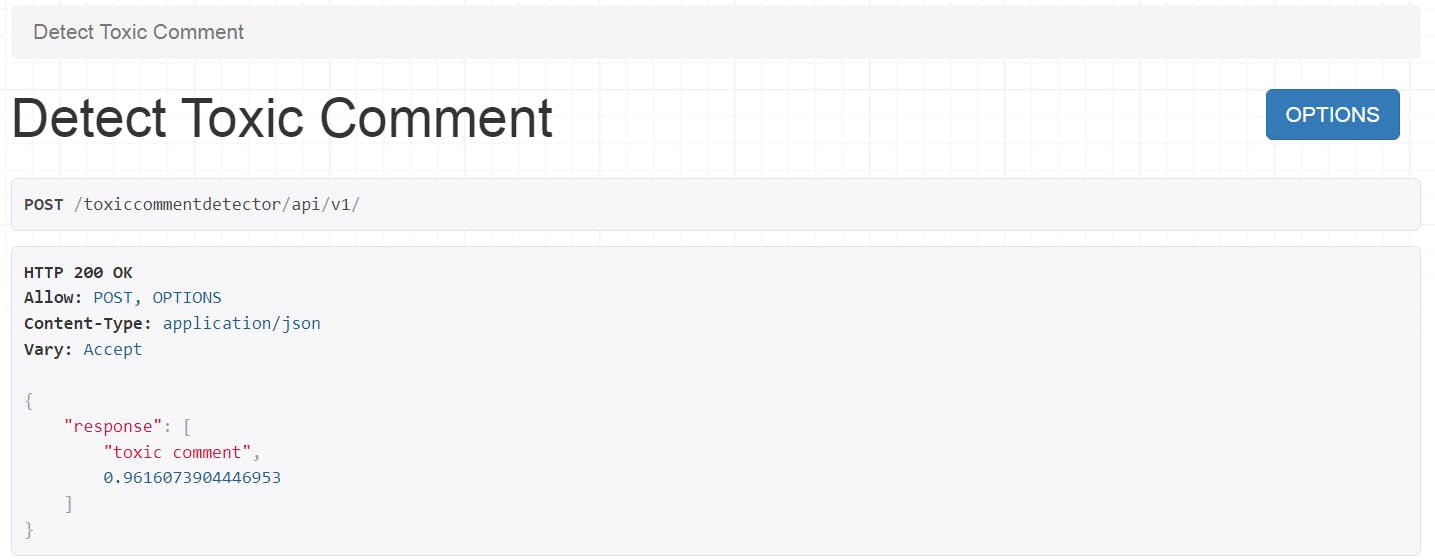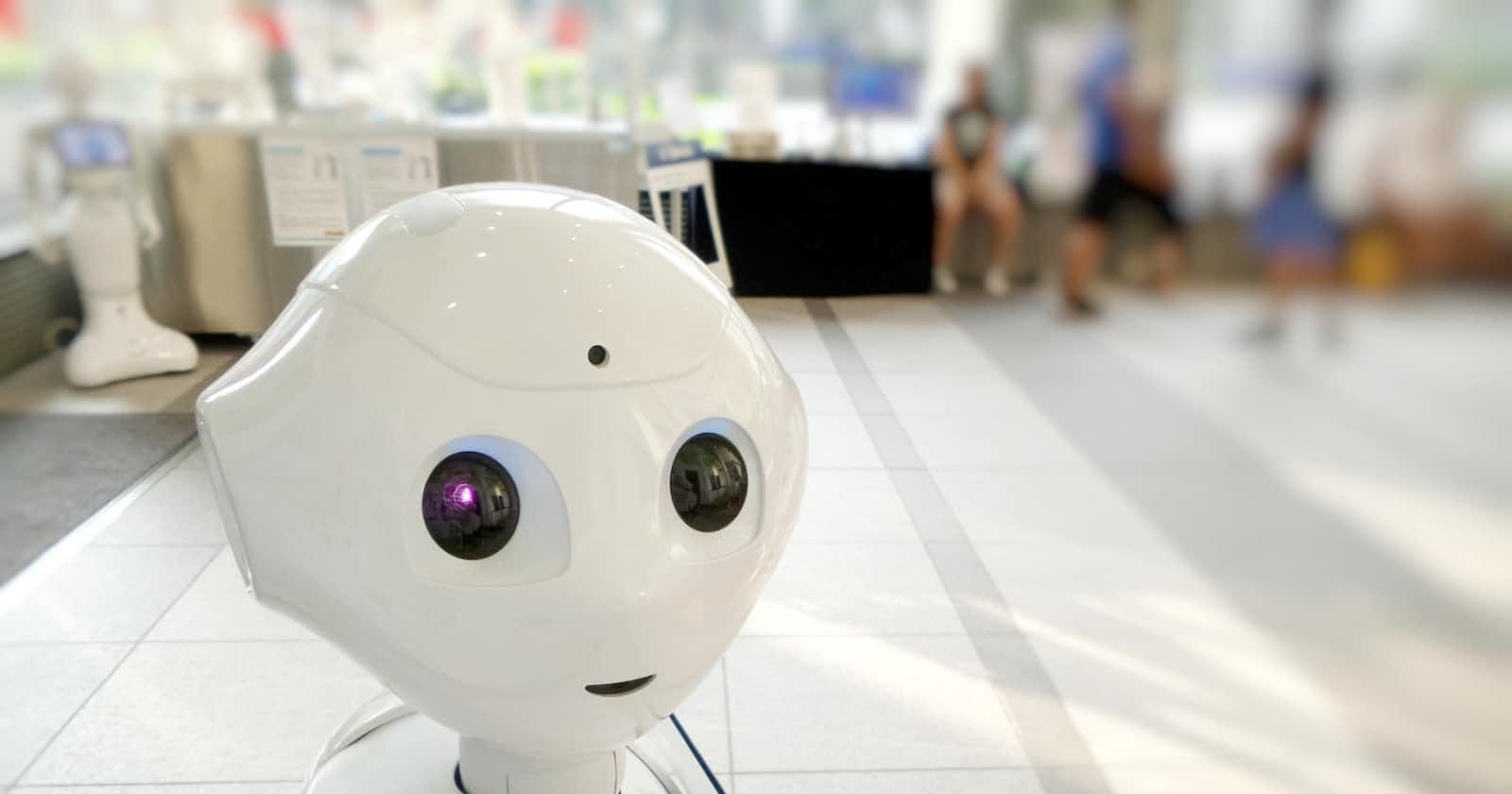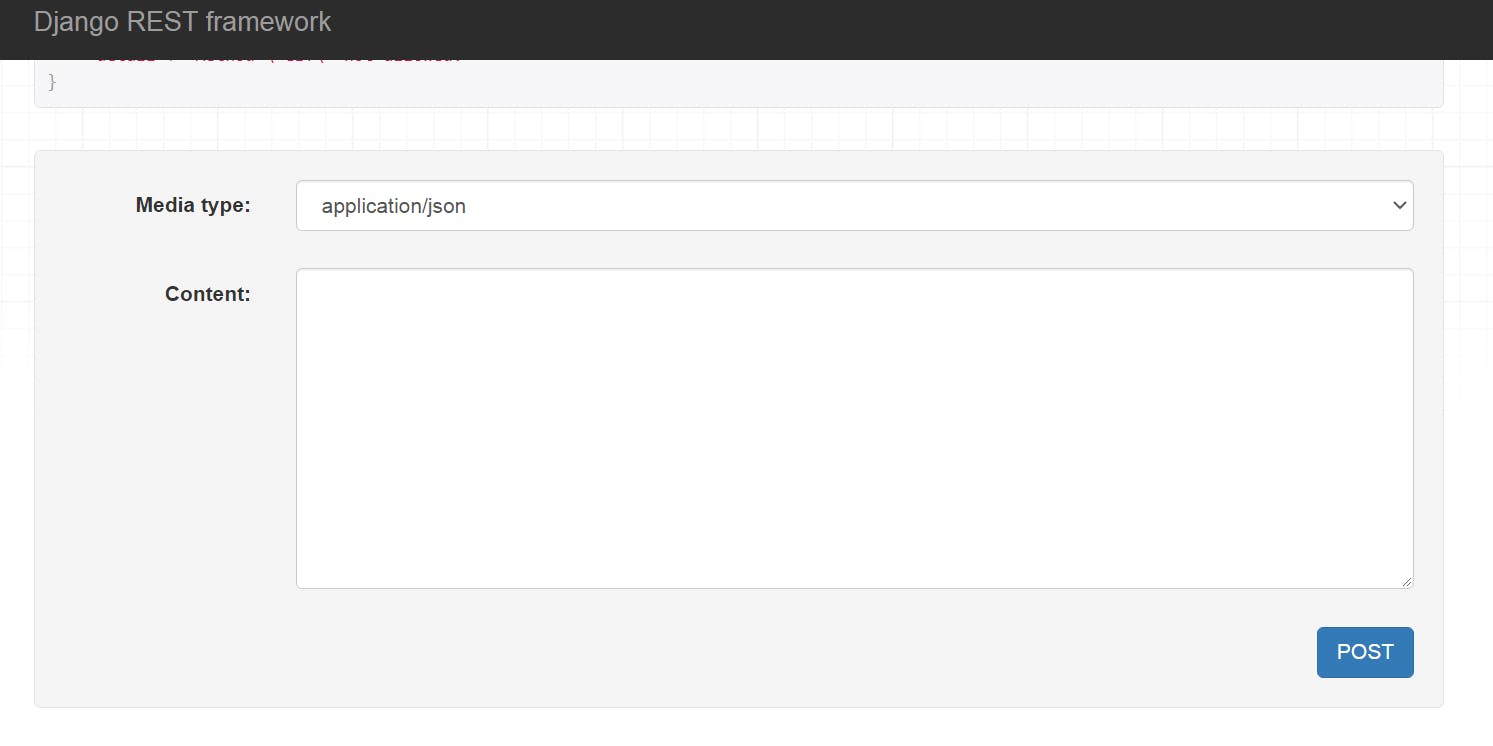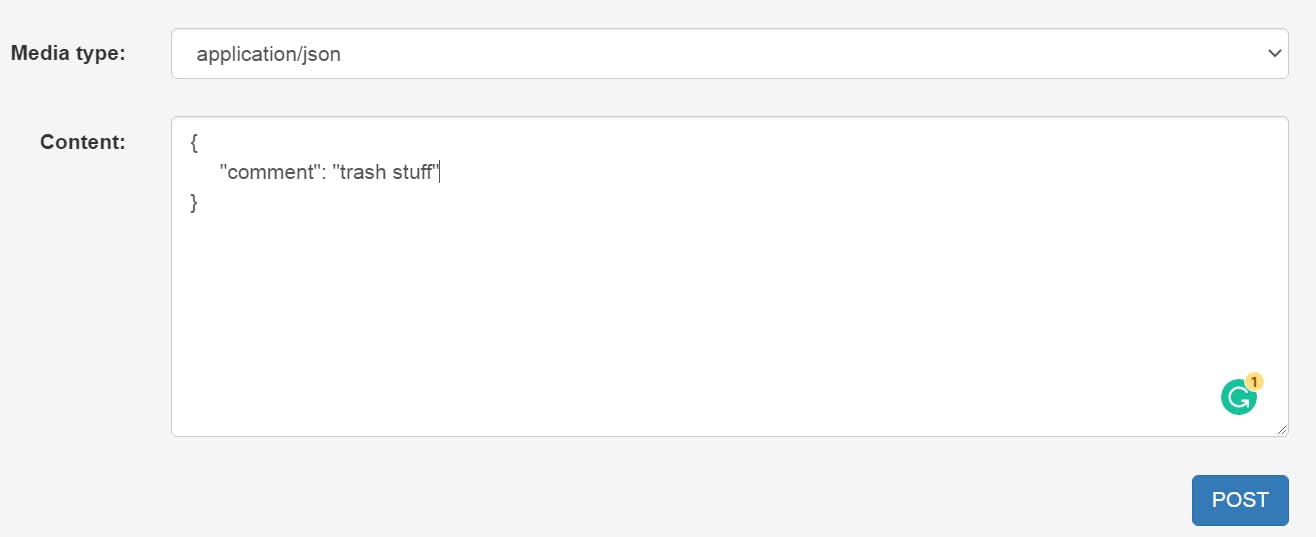
Photo by Possessed Photography on Unsplash
How to build your own API to detect toxic comment
In this article, you will learn to build an artificial intelligent API to detect toxic comment
Introduction
Toxicity is anything rude, disrespectful, or otherwise likely to make someone leave a discussion. We will use Django Rest Framework to build the API.
See how the API works:
When I enter a comment, for Example: "trash stuff" as seen below:

The API will detect whether "trash stuff" is a toxic comment. From the prediction below, "trash stuff" is definitely a toxic comment.

Let's get in and start building
Get model and Vectorizer
Download a trained model and the vectorizer which will help to transform words to numerical vectors from here: https://www.kaggle.com/code/emmamichael101/toxicity-bias-logistic-regression-tfidfvectorizer/data?scriptVersionId=113780035
We are using a Logistic Regression model.
Setup Django Rest Framework project
Create a new folder and open it with your code editor
Run the following command on your terminal to create a new virtual environment called venv
python -m venv myvenv
- Activate the virtual environment
myvenv\Scripts\activate
- Run the following command to install Django and Django Rest Framework
pip install django
pip install djangorestframework
- Create a new Django project called detectorproject and an app called detectorapp
django-admin startproject detectorproject .
python manage.py startapp detectorapp
Open the settings.py file in detectorproject directory and add the detectorapp and rest_framework apps to the list of installed app:
INSTALLED_APPS = [
...
'rest_framework',
'detectorapp',
]
Add model and vectorizer
Add the downloaded model and vectorizer to detectorproject directory/folder directly below manage.py file
services.py
Create a services.py file in detectorapp directory and add the following code:
import pickle
from rest_framework import status
from rest_framework.response import Response
def check_toxicity(comment):
comment_dictionary = {}
comment_dictionary['comment_key'] = [comment]
# load the vectorizer and vectorize comment
vectorizer = pickle.load(open("./Vectorize.pickle", "rb"))
testing = vectorizer.transform(comment_dictionary['comment_key'])
# load the model
with open('./Pickle_LR_Model.pkl', 'rb') as file:
lr_model = pickle.load(file)
# predict toxicity. prediction range from 0.0 to 1.0 (0.0 = non-toxic and 1.0 toxic)
prediction = lr_model.predict_proba(testing)[:, 1]
prediction = float(prediction)
if prediction >= 0.9 and prediction <= 1.0:
response_list = ["toxic comment", prediction]
return Response({"response": response_list}, status=status.HTTP_200_OK)
elif prediction >= 0.0 and prediction <= 0.1:
response_list = ["non toxic comment", prediction]
return Response({"response": response_list}, status=status.HTTP_200_OK)
else:
response_list = ["Manually check this", prediction]
return Response({"response": response_list}, status=status.HTTP_200_OK)
check_toxicity function receives a comment, loads the vectorizer to transform the comment to numerical values, and then passes the numerical values to the model to predict the toxicity of the comment. The model will return any prediction value from 0.0 to 1.0.
Prediction at exactly 0.0 signifies a strongly nontoxic comment while prediction at 1.0 signifies a strongly toxic comment.
For the API, I decided to call predictions greater than or equal to 0.9 and less than or equal to 1.0 toxic comments since the model is pretty sure at these instances, predictions greater than or equal to 0.0 and less than or equal to 0.1 nontoxic comments and regarded every prediction from 0.2 to 0.8 neither toxic nor non-toxic comments.
views.py
In views.py file of detectorapp directory add the following code:
from rest_framework.views import APIView
from .services import check_toxicity
class DetectToxicComment(APIView):
def post(self, request, format=None):
comments = request.data.get('comment')
result = check_toxicity(comments)
return result
We import APIView class from rest_framework.views to help us define a class-based REST framework view
import check_toxicity from services.py file in detectorapp directory.
DetectToxicComment gets comments, calls the check_toxicity function to help predict toxicity, and then returns the result or prediction.
urls.py
- Create a urls.py file in detectorapp directory and add the following code:
from django.urls import path
from . import views
app_name = 'detectorapp'
urlpatterns = [
path('', views.DetectToxicComment.as_view(), name='detect_toxic_comment')
]
- Update urls.py file in detectorproject directory with the following code to include URLs of detectorapp
from django.contrib import admin
from django.urls import path, include
urlpatterns = [
path('admin/', admin.site.urls),
path('toxiccommentdetector/api/v1/', include('detectorapp.urls')),
]
Evaluate API
- Run the following command on the terminal to start the development server
python manage.py runserver
- Go to the following link on your web browser: http://127.0.0.1:8000/toxiccommentdetector/api/v1/ you will see a page as the following:
- Enter a comment in the Content section and click POST. Example:
- You will see a response as the following that "trash stuff" is a toxic comment
Conclusion
Thanks for reading. Get the code here: https://github.com/emmakodes/toxiccommentdetectorapi




